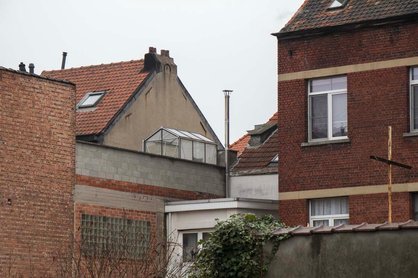
Antoine HORENBEEK
Installing a garden shed may seem straightforward. However, you first need to check the current planning regulations. These rules vary according to your region and commune in Belgium.
Ignoring them can cause problems. You risk fines, forced dismantling or compulsory urban planning regularization.
Knowing whether you need planning permission is essential. It avoids complications after construction. So, what are the rules? Let's find out together.
The size of the shelter plays a key role: below a certain surface area, it may be exempt. Location and distance from property boundaries are also important criteria to check.
To determine whether planning permission is required for a garden shed, several common criteria apply in Belgium:
Maximum surface area without a permit:
In Wallonia, a garden shed can be installed without a permit up to 20 m².
In Flanders, this limit is higher, at 40 m².
In Brussels, regulations are more variable; it is necessary to consult the commune directly.
Maximum height:
In all regions, garden sheds must not exceed 3 metres in height.
Location on the lot:
Shelters may only be built in the rear or side area of the lot. Construction on the front is generally prohibited without a permit.
Distance from property boundaries:
The shelter must be set back at least 1 metre from the neighbor's boundary fence.
Type of zone:
The nature of the land (residential, agricultural, protected...) also influences obligations. Some sites are subject to special rules and may require a permit, even for a small shelter.
Competent authorities:
In all cases, we recommend that you contact your local planning authority to confirm the criteria applicable to your situation.
Even if your project seems to meet these general criteria, we invite you to consult the list of works that require planning permission.
Each region in Belgium has its own rules for garden sheds. Find out what they are to avoid problems.
In Brussels-Capital, planning permission is not required if the garden shed meets certain conditions. The maximum surface area must be 9 m². Total height must not exceed 3 meters, with a maximum cornice height of 2.5 meters.
Shelters must be set back at least 2 metres from adjoining boundaries.
If these criteria are not met, a permit is required. The application must include a detailed plan and comply with local regulations. Some communes impose specific aesthetic criteria for integration into the environment.
Respect the deadlines and forward your file to the appropriate department.

Antoine HORENBEEK
In Wallonia, you don't need planning permission to build a garden shed if certain conditions are met. The maximum surface area allowed is 20 m².
The total height of the shelter must not exceed 3.5 metres, with the height under the cornice limited to 2.5 metres. The shelter must be set back at least 1 metre from party boundaries and located to the rear of the main dwelling.
For any shelter exceeding these thresholds , planning permission or prior declaration is required. Applications must be submitted to the relevant public authority. This involves filling in a specific form and handing it in or sending it by post.
Compliance with these rules avoids penalties for illegal construction.
In Flanders, planning permission is not required if the garden shed complies with certain rules. The maximum surface area is 40 m². Total height may not exceed 3.5 meters.
The building must be set in the side or rear garden and maintain a minimum distance of 1 metre from party boundaries.
If these criteria are not met, a permit is required. The application must be submitted to your local municipal office. Take into account local regulations and decisions taken by the commune before starting your project.
A garden shed located in a Natura 2000 zone or near a protected monument requires special attention. These areas may impose strict restrictions, such as a specific choice of materials or a maximum height.
In such cases, prior consultation with the local authority is essential to avoid any problems.
A garden greenhouse, often likened to a garden shed, may also have different rules. For example, some regions require a permit if the surface area exceeds 20 m², or if it is attached to a detached house.
Protected areas make this even more stringent. Always check these details before installation.
Urban planning infringements can be corrected through a regularization process. Consult an expert to guide your actions and avoid penalties.
Building a garden shed without a permit can lead to problems. There are specific steps you can take to regularize the situation.
Acting quickly reduces the risk of penalties such as heavy fines or even the obligation to demolish the shelter!
Failure to register a garden shed can result in penalties. The consequences can be serious and costly.
Acting quickly limits legal and financial risks. Urban planning violations, such as building a garden shed without a permit, can result in heavy fines. In the event of non-compliance, they can exceed several thousand euros.
A prison sentence is also possible in certain serious cases. Contact the town planning department as soon as possible to regularize your situation.
An incorrectly filled-in or missing permit makes the job harder. Filing or completing your application as soon as possible avoids future complications. Letting an infringement drag on can worsen relations with the local authorities.
Administrative procedures can take a long time, so don't wait to take action.

No, you may be exempt if your shelter meets certain conditions. For example, in Wallonia, a permit is not required for a surface area of 20 m² in an unprotected zone.
If you need planning permission, you must submit your application to your local authority. This file must include information on the surface area of your construction and the type of building.
This depends on local legislation, the size of the shelter, and the location of the project. In Wallonia, the rules vary depending on whether the garden is attached to a house or in an isolated area.
A wooden shelter can be exempted from the permit requirement if it complies with Walloon regulations, particularly with regard to the dimensions and function of the building.
Sheds with gutters or flat roofs, like those with acroteria, may be subject to specific rules. The tone and materials used must also comply with your local regulations.
If your project involves a garden adjoining a house, check local regulations. In some cases, you can build without a permit if the work has been carried out beforehand and complies with the rules.
Author : CORNIL Olivier
Contact UBEX today for a free consultation!
Don't let regulatory changes take you by surprise. Anticipate and act with UBEXyour partner in real estate regulation.
Contact Ubex
AddressesUbex
Avenue Louise 523 B1050 Brussels
Chaussée de Marche 482 B5101 Namur
Rue Bois Gotha 98 B4000 Liège
Rue de Bart Haut 6 B6790 Aubange
Beekstraat 6 B9030 Gent
Copyright © SIZE+ srl 2025. All rights reserved.